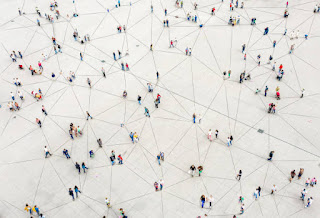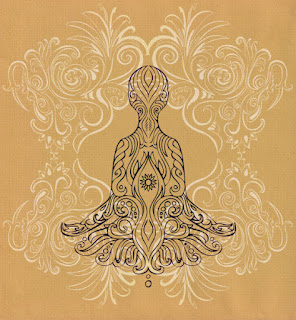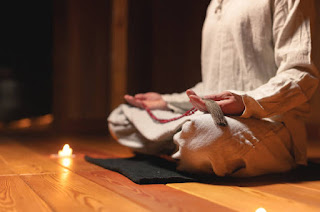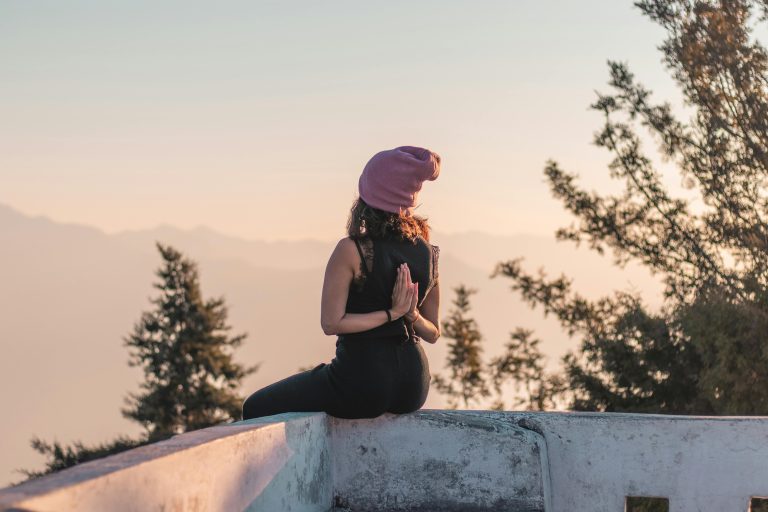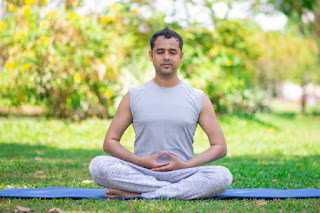Meditation for Collective Consciousness: Transform Your Mind and Uplift the World
Meditation for Collective Consciousness: Transform Your Mind and Uplift the World
Exploring Meditation for Collective Consciousness
When you hear the term Meditation for Collective Consciousness, it might sound esoteric, abstract, or even improbable. The notion that individual meditation could influence the well-being of a community—or even the entire world—can seem far-fetched, especially to those who approach the idea from a scientific or logical perspective. Yet, as interest in the power of the mind continues to grow, practices like these are increasingly being explored, not just in spiritual circles but also in scientific research.
So, what does Meditation for Collective Consciousness really entail? At its core, it’s a practice grounded in the idea that our minds and energies are interconnected. Participants don’t meditate just for personal peace but to connect with and positively impact a larger field of shared consciousness. The practice raises profound questions: Can our thoughts truly affect the world around us? Is there any basis for believing that meditating on love, compassion, or peace could influence humanity as a whole?
To be clear, skepticism is healthy and welcome here. Meditation for Collective Consciousness is a complex topic that blends spirituality with emerging scientific perspectives. By the end of this article, we’ll delve into the core principles behind the practice, explore scientific theories and studies, and offer practical ways to engage meaningfully. Whether you’re open to the concept or view it with doubt, understanding this meditation practice may still offer unique insights and benefits for your personal well-being and how you perceive your connection to the world.
Underlying Philosophy
The practice of Meditation for Collective Consciousness is deeply rooted in the principle of interconnectedness, a concept that is both ancient in spiritual traditions and increasingly explored in modern science. It revolves around the idea that all living beings are intricately linked—not just physically but also energetically. To understand this connection, it helps to delve into spiritual teachings as well as theories emerging from the world of quantum physics.
Interconnectedness: Bridging Spirituality and Science
Ancient Wisdom Meets Modern Science For centuries, spiritual traditions have emphasized the oneness of all life. In Buddhism, for instance, the notion of interbeing suggests that everything in existence is dependent on everything else. Indigenous spiritual practices often speak of humans as an integral part of the earth’s web of life, where each action has a ripple effect across the whole.
This age-old understanding finds an intriguing parallel in the field of quantum physics. One of the fundamental insights of quantum theory is that everything in the universe is interconnected at a deep, subatomic level. The idea challenges the classical notion of a purely mechanical universe where objects are separate and interactions are purely physical. Instead, quantum theory suggests a reality where all particles and energies are linked, even across vast distances.
The Quantum Connection: Entanglement and the Observer Effect
- Quantum Entanglement
- One of the most fascinating phenomena in quantum physics is entanglement. When two particles become entangled, they remain interconnected regardless of the distance between them. A change in the state of one particle will instantaneously affect the other, even if they are light-years apart. While scientists are still grappling with the implications of entanglement, it illustrates a universe that is deeply interconnected, defying the limits of space and time.
- In the context of Meditation for Collective Consciousness, entanglement serves as a metaphor for the idea that our minds and energies could be interwoven with those of others. The potential implications are profound: if particles can influence each other over great distances, could our thoughts and intentions also have an impact on the world around us?
- The Observer Effect
- Another quantum phenomenon that has captured the imagination of many is the observer effect. At its core, this refers to the idea that the mere act of observing a quantum system can change its state. In experiments, particles behave differently depending on whether or not they are being observed, suggesting that consciousness may play a role in shaping physical reality.
- While the observer effect is not directly translatable to everyday experiences, it raises thought-provoking questions about the relationship between consciousness and the physical world. This has led to discussions about how human awareness might influence outcomes or events on a larger scale.
The Impact of Thoughts and Intentions
Vibrational Energy and the Power of Intent The idea that our thoughts and emotions carry vibrational energy is a concept that resonates with both spiritual and energetic healing traditions. According to this philosophy, everything in the universe vibrates at a specific frequency, including human emotions and intentions. Feelings such as love, compassion, and gratitude are believed to have higher vibrations, while emotions like anger and fear vibrate at lower frequencies. When we engage in meditation with positive intentions, we are said to raise our own vibrational frequency and, by extension, influence the collective energy field.
How Intentions May Shape Reality Even if quantum mechanics doesn’t provide a direct explanation for how our intentions might impact the world, the concept of energetic vibration is compelling. Research into the power of focused thought—though still a developing field—has shown some intriguing results. For example, studies on group meditation have suggested correlations between large gatherings of meditators and reduced crime rates or increased societal harmony in the surrounding area. While these findings require further investigation, they hint at the possibility that collective intention can create real-world effects.
In essence, the underlying philosophy of Meditation for Collective Consciousness invites us to explore a worldview where our thoughts and emotions do not exist in isolation. Instead, they are seen as active, energetic forces that have the potential to shape the world around us. Whether you view this from a purely spiritual perspective or through the lens of quantum possibilities, the practice encourages an awareness of the profound connection we share with all living beings.
Scientific Perspective
When it comes to Meditation for Collective Consciousness, skeptics and researchers alike are intrigued by the possibility that focused meditation and positive intentions could influence the world around us. While science has yet to definitively prove that meditation can directly impact global outcomes, there is a growing body of research that suggests a connection between group meditation and societal well-being. This section delves into some of the key scientific studies and theories that explore these possibilities.
The Maharishi Effect: Group Meditation and Societal Change
One of the most frequently cited studies in this field is the Maharishi Effect, named after Maharishi Mahesh Yogi, the founder of Transcendental Meditation (TM). The Maharishi Effect suggests that when a small percentage of the population practices group meditation, there can be a measurable reduction in crime rates, violence, and even international conflicts.
- Research Highlights:
- In one well-known study conducted in the 1990s in Washington, D.C., researchers observed a group of over 4,000 meditators practicing TM with the goal of reducing violent crime in the area. The results showed a statistically significant drop in crime rates during the meditation period, a finding that was published in peer-reviewed journals. Critics, however, point out the challenges of establishing causality and emphasize the need for more rigorous studies to validate these claims.
- Similar experiments have taken place in other cities and countries, with varying levels of success. Despite some skepticism, the consistency of these observations across different regions has sparked ongoing interest in the potential of collective meditation.
The Placebo Effect and Psychological Benefits
Even if you remain skeptical about the idea that meditation can directly influence societal outcomes, the psychological benefits of participating in such practices are well-documented. Meditation is known to have a profound effect on the brain and nervous system, promoting a sense of calm, reducing stress, and enhancing feelings of well-being. These benefits can ripple outward, impacting how individuals interact with their communities.
- Community Cohesion: When large groups of people meditate with a common goal or intention, the shared experience can foster a sense of unity and belonging. This collective sense of purpose can lead to improved relationships and more empathetic interactions, indirectly influencing social harmony.
- Behavioral Changes: People who regularly engage in meditation often report being more compassionate, patient, and open-minded. When these qualities are amplified on a collective scale, they can contribute to a more peaceful and supportive society.
The Power of the Placebo Effect
The placebo effect demonstrates how powerful belief and expectation can be in influencing outcomes. Even if the impact of collective meditation cannot be definitively proven, the act of coming together with a shared intention can create a psychological shift. For participants, the feeling of contributing to a greater good and the belief that their meditation matters can promote emotional well-being and a sense of fulfillment.
- Neuroplasticity and Mindfulness: Research into the effects of meditation has shown that the brain is capable of change and adaptation, a phenomenon known as neuroplasticity. Regular meditation can strengthen neural pathways associated with empathy, compassion, and emotional regulation. When individuals experience these benefits, the collective mental state of a community could theoretically improve.
The Need for More Research
While the Maharishi Effect and similar studies offer promising insights, the scientific community continues to call for more robust, large-scale research to explore the link between meditation and collective outcomes. The field remains a mix of compelling evidence, unanswered questions, and potential that keeps researchers curious.
Balancing Skepticism and Openness If you find it difficult to accept the idea that collective meditation can influence the world, it’s worth considering the indirect effects. Meditation undoubtedly makes individuals more centered, peaceful, and compassionate, and these qualities have a tangible impact on how people interact with one another. At the very least, participating in group meditations can enhance personal well-being, and at best, it might even contribute to a ripple effect of positive change.
Practical Tips for Effective Practice
Meditating for Collective Consciousness may seem like a grand endeavor, but it is accessible to anyone willing to set aside a few moments of focused intention. Whether you’re meditating solo or participating in a global synchronized event, the following practical tips can help you make the most of your practice and contribute meaningfully to the collective energy.
Consistency: The Power of a Regular Practice
One of the most effective ways to deepen your connection to the collective consciousness is by establishing a regular meditation practice. Consistency amplifies the impact of your intentions and strengthens your sense of unity with the world. Here are a few strategies to help you maintain a steady practice:
- Start Small: If you’re new to meditation, commit to just 5-10 minutes a day. Gradually increase the duration as you become more comfortable. Consistency is more important than duration, especially in the beginning.
- Create a Ritual: Set a specific time each day for your meditation practice. This could be early in the morning to set a peaceful tone for the day or in the evening to reflect and send positive energy into the world.
- Track Your Progress: Use a journal or meditation app to log your sessions. Reflect on how your intentions evolve over time and the impact the practice has on your own well-being.
Synchronized Meditation: Tapping into Global Energy
Joining others in meditation, whether physically or remotely, can magnify the sense of unity and purpose. There’s something powerful about knowing that thousands of people around the world are focusing their energy on the same goal as you. Here’s how to make the most of synchronized meditation:
- Join Global Events: Many organizations and meditation groups host global meditation events for specific causes, such as world peace, environmental healing, or disaster relief. You can participate in these events from anywhere in the world, often with guided sessions provided online.
- Coordinate with Friends or Family: If large global events feel overwhelming, consider starting small by synchronizing your meditation with friends or family members. Even a small group meditating together can create a palpable sense of connection.
- Choose a Consistent Time: Even if you are meditating alone, dedicating a time each day to align with the energy of others practicing around the world can be powerful. This might mean meditating at sunrise, during a full moon, or at a time of global significance.
Use Technology to Enhance Connection
Technology can be a valuable tool for connecting with like-minded individuals and making your meditation practice more engaging. From apps to online platforms, there are numerous resources designed to support collective meditation efforts:
- Meditation Apps: Platforms like Insight Timer and Calm often feature guided meditations focused on collective intentions. They also allow you to see how many people are meditating at the same time, fostering a sense of global connection.
- Live Streaming and Virtual Groups: Participate in live-streamed meditation sessions on social media or join virtual meditation circles through platforms like Zoom. This can help you feel part of a community, even from a distance.
- Track Global Meditation Trends: Some platforms provide insights into global meditation trends, allowing you to align your practice with the energy of meditators worldwide. This can be motivating and inspiring, reinforcing the idea that you’re contributing to a larger movement.
Setting a Clear Intention: The Heart of Your Practice
Before you begin each session, take a moment to set a clear and powerful intention. Your intention acts as a guiding force, helping you stay focused and grounded. Here’s how to do it effectively:
- Be Specific: Instead of setting a vague intention like “I want to help the world,” try something more focused, such as “I send peace and healing to all those experiencing suffering” or “I envision the earth’s natural ecosystems thriving and flourishing.”
- Visualize the Outcome: Use your imagination to picture your intention coming to life. Imagine people feeling joyful, the environment healing, or communities experiencing harmony. This visualization can make your intention feel more real and impactful.
- Use Positive Affirmations: Recite affirmations silently or out loud, such as “I am a vessel of love and compassion for the world” or “My energy contributes to the well-being of all living beings.” These affirmations can uplift your spirit and enhance the vibrational energy you send out.
Cultivating a Mindful Environment
Creating a serene, intentional space for meditation can elevate your practice and help you connect more deeply with your purpose. Here are a few ways to create an ideal environment:
- Minimize Distractions: Choose a quiet space where you’re less likely to be interrupted. Turn off your phone or put it on silent to minimize distractions.
- Incorporate Nature: If possible, meditate outdoors or bring elements of nature into your meditation space. The presence of plants, natural light, or the sound of running water can deepen your connection to the earth and collective consciousness.
- Use Rituals to Transition: Light a candle, burn incense, or play calming music as a way to transition into your meditation. These rituals can help signal to your mind and body that it’s time to focus and connect.
Meditation for Collective Consciousness may require a bit of practice to fully embrace, but these practical steps can guide you in creating a meaningful and impactful experience. Whether you’re participating in a global meditation event or quietly setting intentions from the comfort of your home, every effort contributes to the shared energy of humanity.
Benefits Beyond the Individual
Meditation for Collective Consciousness is often practiced not only for personal well-being but also with the hope of contributing to the betterment of the world. While many of the benefits experienced are internal, the practice also aims to create ripple effects that extend far beyond the individual. By focusing positive intentions outward, practitioners hope to promote healing, harmony, and balance on a global scale. Here’s how this meditation can bring benefits to the collective.
Global Healing: Can Meditation Really Make a Difference?
The idea that meditation can contribute to global healing might sound like wishful thinking, but it’s a concept supported by both spiritual traditions and some compelling research. Collective meditation has the potential to bring about real-world change, particularly when large groups come together with a shared intention.
- Reducing Conflict and Violence: As mentioned earlier, studies such as the Maharishi Effect have shown a correlation between group meditation and reductions in crime and violence. Even if these effects are not universally accepted, the act of focusing on peace and harmony can still inspire individuals to approach conflicts more thoughtfully and compassionately.
- Healing After Disasters: Many people use Meditation for Collective Consciousness to send healing energy to areas affected by natural disasters or humanitarian crises. Whether or not the energy has a tangible impact, it can bring comfort to those who feel powerless, reminding them that they are part of a global community of support.
Environmental Impact: Connecting with the Earth
Our environment is facing unprecedented challenges, from climate change to habitat destruction. Meditation for Collective Consciousness encourages people to focus their intentions on the healing and well-being of the planet. Here’s how it works:
- Visualizing a Healthy Earth: Some meditators use guided visualizations to imagine the earth’s ecosystems thriving, forests regenerating, and oceans being cleansed of pollution. This practice fosters a sense of stewardship and responsibility for the natural world, motivating people to take more eco-friendly actions in their daily lives.
- Inspiring Environmental Activism: When people meditate on the well-being of the planet, it can inspire them to become more active in environmental causes. Meditation can create a sense of deep connection with nature, making it difficult to ignore the impact of our actions on the earth.
The environmental benefits may not always be measurable, but the practice encourages a mindset of respect and care for the planet, which can influence individual and collective behavior in meaningful ways.
Expanding Compassion and Empathy
One of the most transformative aspects of Meditation for Collective Consciousness is its ability to expand a person’s sense of empathy. By focusing on the well-being of others, practitioners develop a greater understanding of the suffering and joys of people around the world. This expansion of compassion can lead to more harmonious and supportive communities.
- Community Building: As people become more compassionate through their meditation practice, they are more likely to engage in activities that strengthen their communities. This can include volunteering, participating in community events, or simply being more present and supportive friends and neighbors.
- Bridging Cultural Divides: The sense of interconnectedness fostered by this meditation practice can also help bridge cultural and social divides. When people meditate on the unity of all beings, it becomes harder to see others as separate or different, promoting greater tolerance and understanding.
Inspiring Positive Action
Meditation for Collective Consciousness often leads to a shift in mindset, where people feel more inspired to take positive action in their daily lives. This could be anything from adopting a more eco-friendly lifestyle to advocating for social change or simply being kinder to those around them.
- The Ripple Effect: When one person begins to act with more kindness, empathy, and mindfulness, it can inspire others to do the same. This ripple effect can transform relationships, families, workplaces, and even entire communities, demonstrating the potential power of collective intention.
A Sense of Belonging and Purpose At a time when many people feel disconnected or isolated, Meditation for Collective Consciousness can provide a deep sense of belonging. Knowing that you are part of a global effort to create positive change can be profoundly uplifting. It gives people a sense of purpose, reminding them that even small, individual actions matter.
In summary, Meditation for Collective Consciousness holds the potential to create benefits that extend far beyond personal well-being. By focusing on global healing, environmental stewardship, and expanded empathy, the practice encourages a ripple effect of positive change. While some of these benefits may be difficult to quantify, the collective intention and sense of unity fostered through meditation can inspire meaningful action and connection, contributing to a more harmonious and compassionate world.
Personal Benefits
While the primary goal of Meditation for Collective Consciousness is to contribute to global well-being, it also offers profound personal benefits.
Emotional Growth and Empathy
Practicing this meditation expands your sense of compassion and empathy, making it easier to connect with others and handle emotions more resiliently. By focusing on positive intentions, you naturally cultivate a more compassionate approach to life.
Reduced Loneliness
The practice fosters a deep sense of connection to all living beings, alleviating feelings of loneliness and isolation. Knowing you are part of a collective effort can create a comforting sense of unity and strengthen social bonds.
Increased Sense of Purpose
Meditating with the intention of helping others provides a meaningful sense of purpose. It inspires you to act with more intention and self-awareness, leading to personal growth and a life aligned with your values.
Psychological and Physical Well-Being
Like any meditation practice, this one helps reduce stress, improve focus, and promote overall physical health. The calming effects can make you more centered, enhancing your ability to contribute positively to your community.
In Summary: Meditation for Collective Consciousness benefits both the world and the individual. By nurturing your own well-being, you become more equipped to make a meaningful impact, illustrating the profound interconnection between self-care and collective care.
Challenges and How to Overcome Them
Meditation for Collective Consciousness can be a transformative and inspiring practice, but it does come with its share of challenges. Many people find it difficult to stay motivated or experience skepticism about the impact of their efforts. Understanding these obstacles and knowing how to address them can help you sustain your practice and maximize its benefits.
Skepticism: Overcoming Doubts About the Impact
One of the most common challenges for beginners—and even experienced meditators—is skepticism. It’s natural to question whether your meditation can truly influence the world or create real change. After all, the idea of altering global outcomes through personal intention can seem far-fetched, especially without concrete, easily observable evidence.
- Addressing Skepticism: If you find yourself doubting the effectiveness of Meditation for Collective Consciousness, it’s helpful to start by focusing on the personal benefits. Meditation has well-documented effects on reducing stress, enhancing empathy, and improving well-being, which are valuable even if the broader impact remains unclear. Over time, as you experience these benefits, you may feel more open to the idea that collective intention can create positive ripple effects.
- Embrace an Open Mind: You don’t have to fully believe in the global impact right away. Approach the practice with curiosity and an open mind. Even if the effects are not immediately evident, the act of setting a positive intention can still inspire meaningful change within your own life.
Distraction and Fatigue: Staying Focused and Engaged
Meditation requires mental discipline, and it’s normal to face distractions or fatigue during your practice. The mind can be restless, especially when dealing with the stresses of daily life, and staying focused on collective intentions can be challenging.
- Handling Distractions: When your mind wanders, gently bring your awareness back to your intention without self-criticism. It’s normal for thoughts to arise, and part of the practice is learning to refocus. Techniques like guided meditations or visualizations can help you stay engaged and connected to your purpose.
- Combating Fatigue: If you often feel tired during meditation, try practicing at a time of day when your energy levels are higher. Morning meditations can be invigorating, while afternoon sessions can provide a refreshing break. Deep breathing exercises or light stretches beforehand can also help awaken your energy.
Maintaining Consistency: Building a Sustainable Practice
Another significant challenge is maintaining consistency. Life is busy, and it can be difficult to set aside time every day to meditate, especially when there are no immediate or tangible results to motivate you.
- Make It a Routine: Establish a regular meditation schedule to make the practice a habit. Consistency is key to reaping the long-term benefits of meditation. Try to meditate at the same time each day, whether in the morning, evening, or during a quiet moment in your day.
- Create a Ritual: Having a pre-meditation ritual can help signal to your mind that it’s time to focus. This could be lighting a candle, playing soft music, or taking a few deep breaths to center yourself.
- Set Realistic Goals: Start with manageable sessions. Even five minutes a day can make a difference. As your practice becomes more ingrained, you can gradually increase the duration.
Managing Expectations: Letting Go of the Need for Immediate Results
Many people start Meditation for Collective Consciousness with high expectations, hoping for immediate or dramatic outcomes. It’s easy to feel disappointed if you don’t see tangible results or feel that your efforts are insignificant.
- Focus on the Process: Instead of fixating on the outcome, try to enjoy the practice itself. Meditation is a journey, not a destination, and the process of setting intentions and cultivating positive energy is valuable on its own.
- Trust in the Ripple Effect: Remember that even small, seemingly insignificant actions can have a ripple effect. Just as a single drop of water creates waves, your meditation can contribute to a larger collective energy field. Trust that your efforts, combined with those of others, can make a difference over time.
Overcoming the Fear of Being Powerless
Feeling powerless in the face of global issues is a common struggle. It can be overwhelming to think about problems like climate change, world hunger, or violence, and you may wonder if your meditation can truly help.
- Empower Yourself Through Intention: Rather than feeling overwhelmed by the magnitude of these problems, focus on the small but meaningful impact you can make. Your meditation is a form of energetic activism, and while you may not be able to change the world overnight, you are contributing to a movement of collective healing and awareness.
- Balance Hope and Realism: It’s okay to be realistic about the limits of your influence while still holding hope for a better world. Meditation can help you cultivate a mindset of resilience, hope, and constructive action.
Advanced Practices
Once you’ve established a consistent practice of Meditation for Collective Consciousness, you might feel ready to explore deeper, more advanced techniques. These practices can help you connect more profoundly with the collective energy and enhance the impact of your intentions. They often draw on spiritual symbols, sound healing, and the alignment of energy centers within the body.
Using Sacred Geometry: Tapping into Universal Symbols
Sacred geometry involves the use of specific shapes and patterns believed to represent the fundamental structure of the universe. Meditating with these symbols can deepen your sense of connection to the world and the collective consciousness.
- Common Symbols: Popular sacred geometric symbols include the Flower of Life, which represents the interconnectedness of all life, and the Sri Yantra, which is used to align and harmonize one’s energy. You can visualize these shapes during meditation or keep physical representations nearby to focus on.
- Visualization Techniques: Close your eyes and imagine the sacred symbol expanding outward from your heart, enveloping the entire world in a field of light and unity. Feel the interconnectedness of all beings as you meditate on the intricate patterns.
- Creating a Sacred Space: Consider incorporating sacred geometry into your meditation space, whether through artwork, crystals, or mandalas. These elements can elevate the energy of your environment and make your practice feel more meaningful.
Chanting and Sound Healing: Using Vibrational Frequencies
Sound is a powerful tool for altering consciousness and raising vibrational energy. Chanting mantras or using sound healing techniques can help deepen your meditation and create a resonance that extends into the collective field.
- Mantras and Affirmations: Chanting mantras such as Om or phrases like “Lokah Samastah Sukhino Bhavantu” (May all beings be happy and free) can create a vibrational frequency of love and harmony. The repetition of these sacred sounds is believed to amplify the energy of your intentions.
- Sound Healing Instruments: Instruments like Tibetan singing bowls, crystal bowls, and gongs are used to produce healing frequencies. You can incorporate these sounds into your practice or attend sound healing sessions to experience the vibrational benefits.
- Benefits of Sound Healing: The vibrations created by chanting and sound instruments can help clear energetic blockages, harmonize your body’s energy, and elevate the collective vibration. This practice can also help you feel more relaxed and centered.
Working with Chakras: Aligning Your Energy Centers
The chakras are energy centers within the body that correspond to different aspects of physical, emotional, and spiritual well-being. Aligning your chakras during meditation can make you a clearer channel for sending positive energy into the world.
- Chakra Meditation: Begin by visualizing each chakra, starting from the root (base of the spine) and moving upward to the crown (top of the head). As you focus on each energy center, imagine it glowing brightly and spinning in harmony. This process helps balance your energy and prepares you to send intentions outward.
- Specific Chakras for Collective Work:
- Heart Chakra (Anahata): This chakra is associated with love and compassion. Focusing on the heart chakra can amplify the energy of unconditional love you wish to share with the world.
- Crown Chakra (Sahasrara): The crown chakra connects you to universal consciousness. Visualizing this chakra opening can help you feel a sense of unity with all beings and enhance your awareness of the interconnectedness of life.
Advanced Visualization Techniques
As you deepen your practice, you can explore more complex visualization techniques to strengthen your connection to the collective.
- Planetary Healing Visualization: Imagine the earth in front of you, enveloped in a protective, healing light. See areas of suffering being infused with peace, and visualize ecosystems being restored to balance. Feel gratitude for the planet and all the life it supports.
- Connecting with Collective Energy Fields: Picture yourself as part of a vast network of light, with each meditator acting as a point of energy in this web. Visualize the network glowing brighter with each breath, symbolizing the shared intention of healing and unity.
Incorporating Rituals and Elements
Rituals can make your meditation practice feel more sacred and impactful. Incorporating the five elements—earth, water, fire, air, and ether—can also help you feel more grounded and connected to nature.
- Earth: Use grounding stones like hematite or meditate in nature to connect with the energy of the earth.
- Water: Incorporate the sound of flowing water or visualize a river cleansing and renewing the world.
- Fire: Light a candle as a symbol of transformation and the light you wish to bring to the world.
- Air: Focus on your breath or use incense to honor the element of air.
- Ether: Create a space of stillness and listen to the subtle vibrations around you, acknowledging the presence of spirit.
Practicing in Sacred Locations
If possible, visiting sacred sites or meditating in places of natural beauty can deepen your experience. The energy of these locations is often more potent, making it easier to connect with the collective consciousness.
- Power Spots: Locations like Stonehenge, the Great Pyramids, or Mount Shasta are believed to hold powerful energy. Meditating in these places can amplify your intentions and help you feel more attuned to the earth’s energy grid.
- Nature Retreats: Even if you can’t visit a well-known sacred site, meditating in a quiet forest, by a river, or on a mountain can have a similar effect. Nature is a powerful teacher and healer, and being in these environments can help you feel more connected to the collective energy.
Spiritual and Cultural Roots
Meditation for Collective Consciousness is not a new concept; it has deep roots in spiritual and cultural traditions across the world. These practices emphasize the interconnectedness of all life and the power of intention to create positive change. Understanding the origins of this form of meditation can provide a richer, more meaningful experience, as it connects you to an ancient lineage of wisdom.
Traditions Emphasizing Interconnectedness
Many spiritual traditions teach that we are all part of a greater whole. This understanding forms the foundation of Meditation for Collective Consciousness, which aims to connect individuals to this universal energy.
- Buddhism and Metta (Loving-Kindness) Meditation: One of the clearest examples of collective intention in meditation is Metta or Loving-Kindness Meditation. Practitioners send thoughts of love and well-being, first to themselves, then to loved ones, then to neutral people, and finally to all sentient beings. The practice is rooted in the belief that sending out positive energy can uplift the collective consciousness and reduce suffering.
- Hinduism and Bhakti Yoga: In Hinduism, Bhakti Yoga is the path of devotion and love for the divine, which often involves practices aimed at spreading love and compassion throughout the world. The belief in Atman (individual soul) being a part of Brahman (universal soul) reinforces the idea that individual intentions can influence the universal consciousness.
- Christian Contemplative Prayer: In Christianity, contemplative prayer emphasizes stillness and a deep sense of unity with God. Practices like the Prayer of the Faithful, where people pray for the well-being of others, embody the spirit of collective consciousness. This form of meditation focuses on intercessory prayers that intend to create healing and harmony in the world.
Indigenous Spiritual Practices
Many Indigenous cultures have a long history of honoring the interconnectedness of life and using collective intention to heal and balance the world. Ceremonies, rituals, and meditations often emphasize harmony with nature and the spiritual world.
- Prayer Circles and Healing Ceremonies: Indigenous communities around the world often come together to pray and meditate for the well-being of their people, the land, and all living creatures. These practices are based on the belief that human beings are stewards of the earth and that their collective energy can bring about healing.
- Honoring the Elements and Spirits: Rituals that call on the spirits of nature—such as the wind, water, and earth—emphasize the interconnectedness of all existence. These ceremonies are a form of meditation, where the collective focus is on restoring balance and showing gratitude to the natural world.
Modern Movements and Global Initiatives
In recent decades, modern movements have emerged that focus on harnessing the power of collective consciousness for global well-being. These initiatives bring together ancient wisdom and contemporary understanding, aiming to create large-scale positive change through shared meditation practices.
- The Global Coherence Initiative: This scientific research and education project studies how human consciousness can affect the earth’s magnetic field and promote societal well-being. It encourages synchronized global meditations with the intention of creating coherence and harmony on a planetary scale.
- World Peace Meditations: Every year, millions of people participate in global meditation events aimed at promoting world peace. These events are often synchronized on significant dates, such as the International Day of Peace, to maximize the collective energy.
The Role of Collective Rituals
Many spiritual traditions emphasize the importance of rituals and ceremonies in amplifying collective intention. These rituals often involve a combination of meditation, chanting, prayer, and symbolic actions to direct energy outward.
- Creating Sacred Spaces: In many cultures, rituals are performed in sacred spaces such as temples, meditation halls, or natural sites like mountains and rivers. The collective energy generated in these spaces is believed to be more potent and effective in bringing about positive change.
- The Power of Sacred Objects: Rituals may also involve sacred objects, such as crystals, prayer beads, or ceremonial tools, to channel and focus the energy of the group. These objects are seen as amplifiers of intention and are often used with great reverence.
Integrating Ancient Wisdom into Modern Practice
Even if you don’t identify with a specific spiritual tradition, you can draw inspiration from these ancient practices to enrich your meditation for collective consciousness. For example, you can incorporate elements of Metta meditation, honor the four directions as in Indigenous ceremonies, or use symbols like the Sri Yantra from Hinduism to deepen your practice.
- Respect and Cultural Appreciation: When integrating spiritual and cultural practices, it’s important to approach them with respect and mindfulness. Understanding the origins and meanings behind these practices ensures that you are honoring the traditions rather than appropriating them.
In Summary: Meditation for Collective Consciousness has roots in diverse spiritual and cultural traditions, from Buddhist and Hindu practices to Indigenous rituals and modern global initiatives. These practices emphasize the power of collective intention and the interconnectedness of all life. By drawing on this rich heritage, you can deepen your practice and feel more connected to the global community working toward healing and harmony.
The Power of Meditation for Collective Consciousness
Meditation for Collective Consciousness invites us to envision a world where our thoughts and intentions can truly make a difference, both for ourselves and for the planet. It blends ancient wisdom with modern scientific curiosity, challenging us to consider the profound impact of focused energy and collective awareness. Even if the idea of influencing global outcomes through meditation remains a matter of personal belief, the practice undeniably offers transformative benefits.
By meditating with the intention of connecting to and uplifting the collective field, you cultivate greater empathy, compassion, and a sense of unity with all beings. You become part of a larger movement focused on healing and harmony, fostering both internal and external well-being. Whether you are inspired by the spiritual roots of this practice or motivated by its potential for societal impact, your efforts contribute to a ripple effect of positivity.
As you move forward in your meditation journey, remember that even the smallest intention holds power. Every moment you spend connecting with the collective consciousness, you are strengthening the web of unity that binds us all. So, take a deep breath, set your intention, and trust that your practice matters. Together, we can work toward a world rooted in love, peace, and shared purpose.


